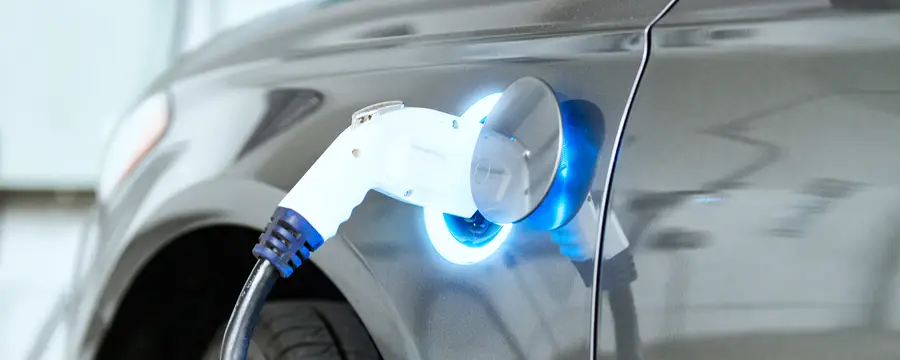
Electric vehicles are part of India's evolving plans on energy and transportation.
India is seeking the right transportation energy solution to quell environmental concerns and the nation’s rising number of imported goods compared to exported goods. India has the potential to become one of the largest electric vehicle (EV) markets in the world. In this regard, the Government of India’s Department of Heavy Industries approved Phase-II of the Faster Adoption and Manufacturing of Hybrid and Electric Vehicles (FAME) scheme, providing $1.4 billion (INR 10,000 Crore) in incentives. Phase-II aims to generate demand by supporting 7,000 e-buses, 500,000 e-3 wheelers (such as rickshaws), 55,000 e-4 wheeler passenger cars (including strong hybrid) and one million e-2 wheelers. However, policymakers are currently uncertain of the long-term effects of such an aggressive stance, given that many questions remain unanswered.
Key questions for batteries include:
- What will the battery life of EVs be given that India has diverse climatic conditions?
- What will the recycle plan be for these batteries?
- How will India gain access to Lithium reserves?
Other questions from a grid standpoint are:
- How will EV charging affect India’s grid infrastructure?
- What energy source will generate the excess electricity required for charging provided that more than 75 percent of electricity is generated using thermal power plants?
- Will there be any positive impact to the viability of thermal power plants provided that the average Plant Load Factor (PLF) currently stands at 55.85 percent (cumulative for April through December 2019)?
While I applaud the work of India’s government think-tank, NITI Aayog, as well as the efforts of various ministries to support an increase in EV adoption, establishing an integrated transport energy solution for the country must go beyond EVs. This solution, unlike EV schemes, needs to account for India’s native resources and current vehicles on the road, as well as address environmental concerns. One approach can include converting indigenous coal to methanol and di-methyl ether (DME) for blending with petrol and diesel respectively.
Here are six reasons why India should consider preparing a comprehensive transport plan to incorporate blending methanol and DME with petrol and diesel:
1. It would improve air quality and lower associated health risks caused by air pollution
According to the World Health Organization, exposure to air pollution can lead to respiratory infections, worsen asthma, reduce lung functionality, and impact cardiovascular health. Primary contributors to air pollution include oxides of nitrogen - NOx (NO and NO2) and Particulate matter – PM (PM 2.5 and PM 10). NOx and PM2.5 are majorly attributed to vehicular emissions, especially in an urban environment.
EVs are not the only solution that would positively impact the environment. Blending in the right percentages (about 15 percent v/v methanol in petrol and 20 percent v/v DME in diesel) would cause the fuel to burn completely at low temperatures. This would reduce NOx emissions and PM2.5 emissions, lowering India’s air pollution.
2. It would help people avoid the cost of buying a new car
Achieving the real benefits of EVs relies on the premise that several consumers will purchase EVs over the next few decades. However, the Internal Combustion (IC) engines of existing vehicles can run lightly blended fuels with little to no modifications. From previous experience in this sector, M15 (a mixture of 15 percent methanol with gasoline) is fully operational in conventional vehicles with some minor modifications, such as using stainless-steel fuel lines in place of rubber and substituting current sealing elastomers with non-corrosive ones. These minor modifications to vehicles currently on the road offer a short-term and affordable solution while the country transitions to operate more EVs.
3. It would reduce the number of imports while embracing India’s native resources
The battery technology of EVs requires elements such as lithium and cobalt to be imported into India. Embracing fuel made from the conversion of native coal to methanol and DME would enable a reduction in the number of imports and therefore, a reduction in the current account deficit or the disproportionate number of imported goods compared to exported goods.
4. It would strengthen India’s energy security by lowering its dependence on importation
By reducing India’s dependence on importing crude oil and better utilizing India’s own natural resources, such as coal, the nation will be able to strengthen its energy security.
5. It would refuel cars with existing infrastructure more easily
With distribution companies (Discoms) facing financial challenges, there is hardly any incentive for them to undertake a large infrastructure grid upgradation project to enable the installation of fast chargers for EVs. However, blending can be conducted at existing blending stations; additives are currently blended into petrol without disrupting the fuel supply chain.
6. Decades of research support this blending methodology
Discussing transport solutions without considering methanol/DME blending as an option is wasting decades of hard work to identify the right gasifier for use with Indian high ash coal. For example, a 2002 USAID-funded gasifier feasibility study found that the pressurized fluidized bed gasification (PFBG) technology offered by the Gas Technology Institute (GTI) was the technology of choice for typical high‐ash Indian coals. The study involved key players such as Bharat Heavy Electricals Limited (BHEL), Lurgi (now Air Liquide), Kellogg Rust Westinghouse (KRW), GTI, and other gasifier technology suppliers.
EVs are going to play a very important role in the coming years. A testament to this role can be represented by Tesla Inc’s (TSLA) rise in share price over the past six months. However, a robust, customized, country-specific macro solution to transportation requirements needs to be developed. This macro solution should be holistic enough to capture the essential supply and demand scenario of various resources available in the country and its corresponding economic benefits. As far as India is concerned, the transportation solution needs to include exploitation of available coal resources to manufacture and blend methanol and DME as a major component.
For more on India's energy future, see Staff Engagement: The Missing Ingredient for Power Sector Reform in India.

